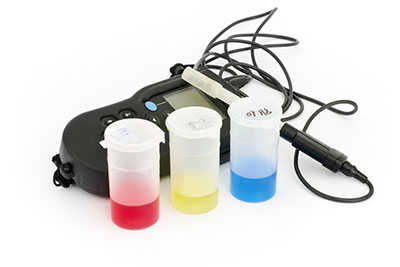You'll find multiple power transistors in electronics products, each suited to a different role. We are interested in the 2n3904 Transistor and 2n3904 transistor datasheet in this article. Primarily, we'll dwell on its essential details, such as its pinout, features, and uses. Read on.
Contents
What is a 2n3904 Transistor?

Fig 1: Power Transistors and a Circuit Board
Primarily, it is an NPN transistor type. Thus, its collector and emitter pins remain in open mode when you hold the base pin to the ground. This is the reverse bias mode. Conversely, they stay closed (forward bias) when connecting an electrical signal to the base pin.
Also, you can only connect loads of 200mA or equivalent collector voltage when using this Transistor. Additionally, biasing the Transistor requires a 5mA supply current to the base pin.
2n3904 transistor Pin Configuration

Fig 2: A Set of Power Transistors
The Transistor mainly comprises three pins.
- Pin one is the emitter, and it's the terminal via which electric current drains out of the Transistor.
- The second pin represents the base. It is handy in controlling the biasing of Transistor (s).
- Lastly, pin three is the collector. Electric current will enter the Transistor via this pin.
Special Offer: Get $100 off your order!
Email [email protected] to get started!
2n3904 Transistor Key Features

Fig 3: Two Power Transistors
- It belongs to the class of Bi-Polar NPN transistors. Also, features a maximum DC Current Gain (hFE) of 300
- It is present in a To-92 Package and has a collector-Base Voltage of 60V
- Its continuous collector current will be 200mA, and the typical collector-Emitter Voltage is 40V
- It has a maximum biasing current of 5mA and an ultimate Base- Emitter Voltage of 6V
- The Transistor goes off on the removal of the base current. Also, the Base Emitter's typical Voltage at the cut-off region is approximately 600 mV.
Also, note that measuring the collector-emitter Voltage and collector-base voltages at the Transistor's saturation point is possible.
The use of 2n3904 Transistor
2N3904 as switch

Fig 4: Illustrating the Concept of Electric Switches
Operating this Transistor for switching implies using it in the saturation and cut-off regions. Thus, the Transistor will act as an open switch during the forward bias mode. Conversely, it will function as a closed switch when you set it in the reverse bias mode.
You can control the bias mode by supplying the appropriate current to the base pin. In this case, the maximum biasing current should be not greater than 5mA. Otherwise, It will destroy the Transistor.
Thus, connecting a resistor in series with the base pin is imperative to prevent that.
2N3904 as Amplifier

Fig 5: Typical Amplifier Controls
For a transistor to function as an amplifier, you should operate it in the active region. Its adequate power, Voltage, and current amplification are in three main configurations in this mode. They include:
- Common collector amplifier
- The Common emitter amplifier
- Common base amplifier
The most common configuration you'll find in amplifier circuits is the common emitter type. Also, you can calculate the Transistor's DC gain as an amplifier using the formula:
DC current gain = the collector current/ base current.
2N3904 Equivalent NPN Transistors

Fig 6: A set of Power Transistors
BC639、BC549、2SC5200、2N2222 TO-18、2N3055、2N2222 TO-92、2N3906、BC636
2n3904 transistor Applications

Fig 7: A TV Set
- Useful in driver modules such as in an LED Driver. Also, it is handy in relay drivers.
- Standard in amplifier applications and amplifier modules, e.g., signal amplifier and audio amplifiers
- Essential in home appliances such as TVs.
- Helpful in controlling voltage logs of up to 40V. Primarily, this is because of the high base voltage emitter and emitter voltage collector.
Conclusion
The 2n3904 Transistor is one of the essential BJTs - Bipolar Transistors. It also has a wide range of applications, as illustrated above. For more insights or questions on the working of this well-designed bipolar Transistor, talk to us.
Special Offer: Get $100 off your order!
Email [email protected] to get started!







